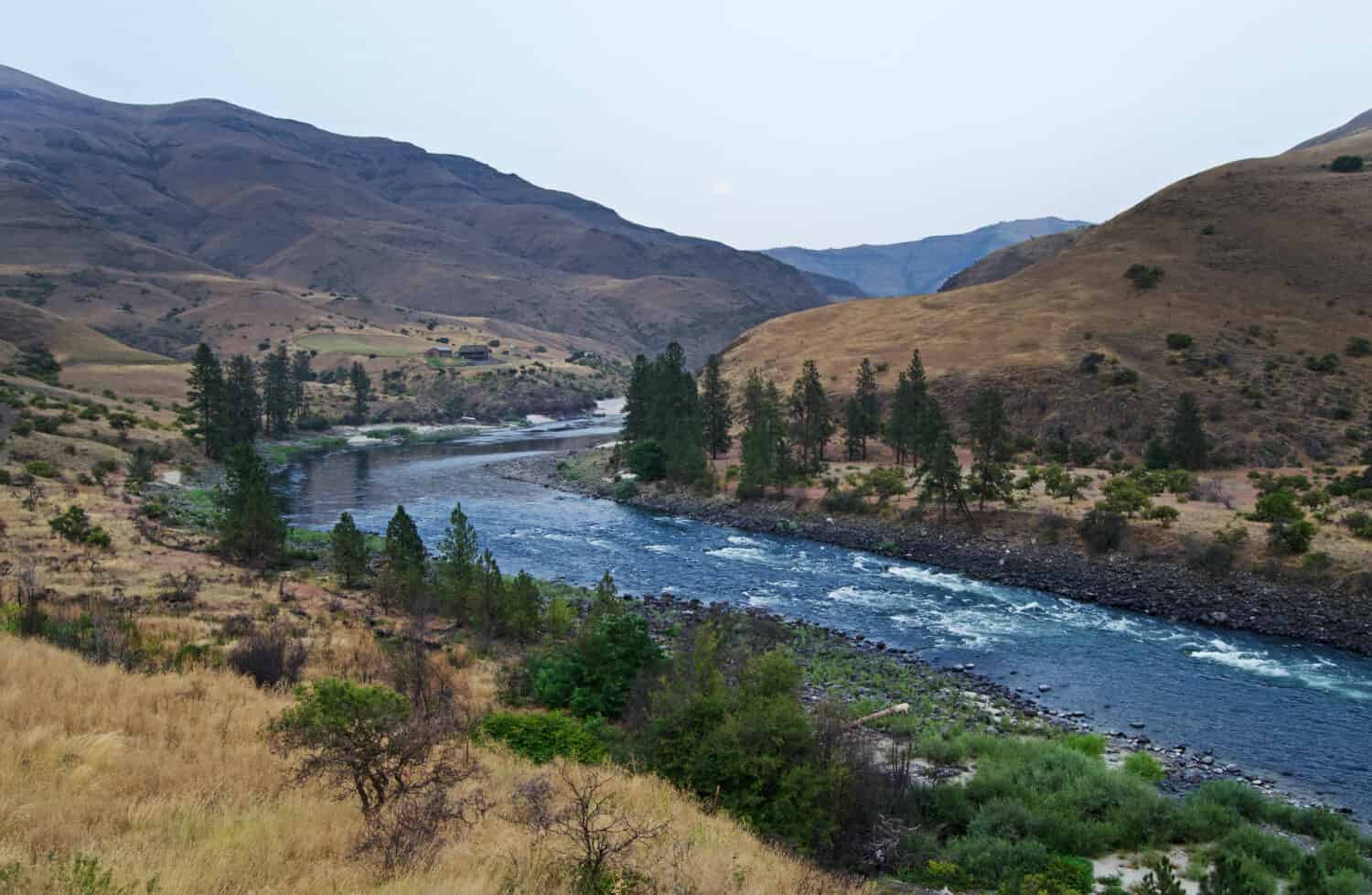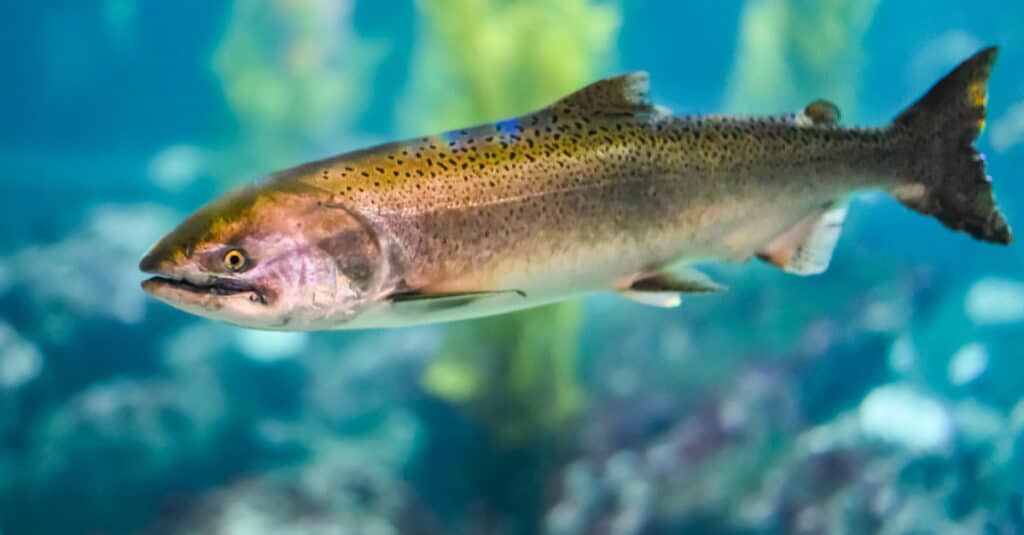Idaho’s Salmon River runs a 425-mile stretch through the central portion of the state before eventually emptying into the Snake River. The Salmon is a fast and free-flowing river, notorious for its fast rate of flow, pool-and-drop hydrology, and white sand beaches. It is also a popular destination for experienced kayakers, canoers, and rafters, having earned its nickname — The River of No Return — for its intense rapids. It is free of dams and flows through breathtaking pools and canyons, some of which are deeper than the Grand Canyon.
In addition to its beauty and recreational popularity, the Salmon River is home to myriad wildlife species, some of which are threatened or endangered. This is due in large part to the river’s proximity to historic and present mining and dredging operations. Throughout the late 1800s, the Salmon was a popular destination for gold miners who polluted the river and fought to displace its native inhabitants. Since then, many operations have taken place along the Salmon’s waters. Today, old mine sites are the subject of potential expansion efforts and new mines may soon begin.
With its fierce rapids, high flow rate, and proximity to current and historic mining operations, is the Salmon River safe to swim in? If so, will it stay that way?

The mighty Salmon River and its inhabitants have a complicated and difficult history full of human intervention. Is it safe to swim in today?
©Jim Black/Shutterstock.com
Is it Safe to Swim in the Salmon River?
Along its 425-mile stretch, there are certainly some areas that are calm enough to swim in safely. Many thousands of people take to the river’s waters every year for recreational purposes, usually canoeing, kayaking, or rafting. State agencies enforce permitting for long stretches of it, however. Those who wish to float the difficult and isolated Wild section of the Salmon River, from Corn Creek Campground to Long Tom Bar, may want to apply for a permit with the forestry service.
Though the river may be traversable and even swimmable despite its fast pace and churning waters, the quality of the water itself is uncertain. Mining and dredging projects, both new and old, threaten the water quality and the health and safety of its inhabitants on a daily basis.

Middle Fork of the Salmon River, Salmon-Challis National Forest in Idaho.
© Intermountain Forest Service, USDA Region 4 Photography / Public Domain – License
Threats to the Salmon River and its Inhabitants
Studies by the US Geological Survey and the Department of Interior show that the water quality of the Salmon River is in bad shape. Many years after mining operations halted at the Stibnite Mining District, groundwater and surface water originating at the site still show high levels of pollutants. Likely due to erosion of soil fill into the river, surface water regularly shows high levels of mercury. The groundwater that emanates from the mine site, contributing to the flow of the Salmon River, contains high levels of arsenic and antimony as well. The levels of these pollutants in the Salmon River regularly exceed the human-health-based criteria set by the EPA, surpassing them hundreds of times over.
Those who lived through the site’s mining boom in the 20s and 30s recall that, after operations ceased, the site was abandoned and there were no restoration efforts. Though effluent from the Stibnite mine site continues to degrade the waters of the Salmon River, proposals exist today to reopen and expand the historic mine. Calls from many environmental organizations, including the Center for Biological Diversity, demand that the state and related agencies invest in the restoration of the site rather than the reopening of the mine. These calls are in line with the concerns of thousands of Idahoans who doubt the safety of the plan to contain the existing waste and the integrity of the company carrying out the operation. Thousands of others, however, have voted to move forward with the project. The future of the Salmon River and its inhabitants hangs in the balance.
The Future of the Salmon River
The Salmon River is home to many species of fish, some of which suffer endangerment due to habitat loss. The Chinook salmon is one such species. Since 1938, these fish have been unable to swim past the Yellow Pine Pit. The pit, which has existed since the turn of the century, effectively cuts the Chinook salmon off from their annual spawning grounds. Other species are impacted in the same way. The pit also isolates steelhead trout, cutthroat trout, and bull trout from their spawning grounds, contributing to their overall decline in population. Though there is a plan to create a temporary spawning tunnel to allow the fish to bypass the Yellow Pine Pit, many environmentalists local and abroad doubt its safety and efficacy.

The steelhead trout, among other fish in the Salmon River, have been unable to access much of their spawning grounds since the late 1930s when the Yellow Pine Pit cut off their access.
©David A Litman/Shutterstock.com
The Idaho Conservation League states that the plan made by Perpetua Resources for the handling of the mine site is flawed. The plan, though it would allow the fish passage around the Yellow Pine Pit, would permanently destroy the Meadow Creek bull trout spawning grounds and exclude them from others due to the effects of mining on the river’s temperature. It would also create access roads for material and waste transport that, by virtue of their planning, increase the risk of spills into and around the river. They and countless others hope that the US Forestry Service will reject current plans for the development of the mine and instead move to protect the quality of the water and the health of its inhabitants.
The photo featured at the top of this post is © Gary Gilardi/Shutterstock.com
Thank you for reading! Have some feedback for us? Contact the AZ Animals editorial team.






